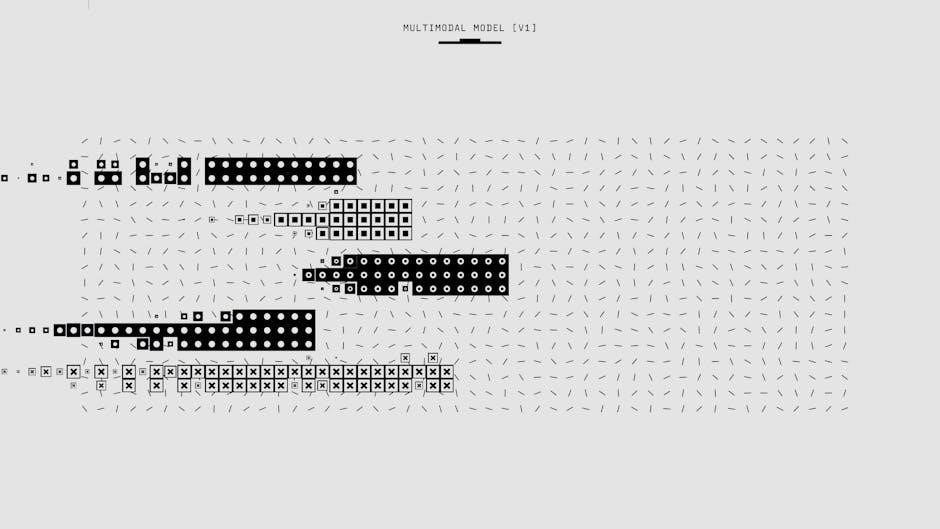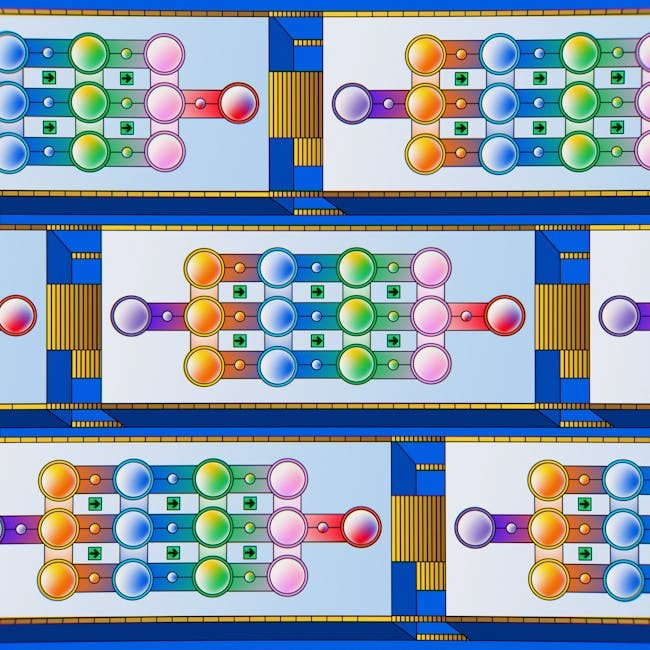The Standard Template Library (STL) is a powerful collection of C++ template classes and functions providing essential data structures and algorithms. It offers containers, iterators, and algorithms to simplify development, enabling efficient and reusable code. STL accelerates programming tasks and is widely adopted in professional environments.
1.1 Historical Context and Goals of STL
The Standard Template Library (STL) was originally designed by Alexander Stepanov and became part of the C++ standard in 1998. Its primary goal was to create a generic, efficient, and reusable library of data structures and algorithms. STL aimed to simplify programming by providing flexible, pre-tested components, enabling developers to focus on problem-solving rather than implementing basic structures. This approach promoted code reusability and performance optimization across various applications.
1.2 Benefits of Using STL in C++ Programming
Using STL in C++ offers numerous benefits, including code reusability, reduced development time, and optimized performance. STL provides pre-tested, generic components, ensuring reliability and efficiency. Its container classes and algorithms enable developers to focus on logic rather than implementing low-level structures. This fosters cleaner, more maintainable code and accelerates project delivery, making STL indispensable for modern C++ programming.

Core Components of STL
The STL comprises containers, iterators, algorithms, and utilities, providing a comprehensive framework for efficient data manipulation and generic programming in C++.
2.1 Containers: Data Structures in STL
Containers in STL are class templates that store collections of objects. They provide data structures like vectors, lists, sets, and maps, each with specific characteristics. Sequential containers (e.g., vector, list) store elements in a linear order, while associative containers (e.g., set, map) organize data based on keys. Adapter containers (e.g;, stack, queue) modify existing containers for specific functionalities. Containers are flexible and efficient, enabling dynamic resizing and optimized operations for various programming needs.
2.2 Iterators: Connecting Algorithms and Containers
Iterators are pointer-like objects that connect STL algorithms with containers, enabling traversal and element access. They abstract the container’s underlying structure, allowing algorithms to operate generically. Types include input, output, forward, bidirectional, and random access iterators, each with specific traversal and manipulation capabilities. This abstraction allows algorithms to work seamlessly across different container types, enhancing flexibility and code reusability without exposing implementation details.
2.3 Algorithms: Functions for Data Manipulation
STL algorithms are pre-defined functions that operate on containers to perform tasks like sorting, searching, and transforming data. They are designed to work generically, enabling operations across various data types. These functions are efficient, well-tested, and optimized for performance. By using STL algorithms, developers can avoid writing custom code, reducing development time and improving code quality. They simplify complex data manipulations and enhance overall programming productivity.
2.4 Utilities: Additional Functionalities in STL
STL utilities provide supplementary functionalities that enhance programming efficiency. These include pairs, tuples, and memory management tools like smart pointers. Pairs and tuples allow storing and manipulating small collections of data, while smart pointers (e.g., unique_ptr, shared_ptr) manage dynamic memory, preventing leaks. These utilities simplify tasks, promote cleaner code, and ensure resource management, making STL a comprehensive toolset for modern C++ programming.

Types of STL Containers
STL containers are categorized into sequential, associative, unordered, and adapter types. Sequential containers store elements in a linear order, while associative containers organize data based on keys. Unordered containers offer fast access without specific ordering, and adapter containers modify existing containers for specialized use cases, providing diverse data management solutions.
3.1 Sequential Containers (Vector, List, Deque)
Sequential containers store elements in a linear order, allowing efficient access and manipulation. Vectors are dynamic arrays for random access, lists are doubly-linked for efficient insertions, and deques (double-ended queues) support operations at both ends. These containers are ideal for scenarios requiring sequential data organization, with vectors offering fast access, lists enabling efficient modifications, and deques providing versatile insertion and removal capabilities.
3.2 Associative Containers (Set, Map, Multiset, Multimap)
Associative containers store elements in a sorted order based on keys. Sets and multisets store unique or multiple values, respectively, while maps and multimaps associate keys with values. These containers enable efficient searching, insertion, and deletion operations, typically implemented using balanced trees. They are ideal for applications requiring quick lookups, such as databases or configurations, offering average O(log n) time complexity for key-based operations.
3.3 Unordered Associative Containers (Unordered Set, Unordered Map)
Unordered associative containers, such as unordered_set, unordered_map, unordered_multiset, and unordered_multimap, store elements without maintaining a specific order. They use hash tables for fast average O(1) time complexity for insertions, deletions, and searches. These containers are ideal for applications requiring efficient lookups without the need for ordering, offering flexibility and performance in handling large datasets effectively.
3.4 Adapter Containers (Stack, Queue, Priority Queue)
Adapter containers like stack, queue, and priority_queue provide specialized interfaces for common data structures. A stack follows LIFO (Last In, First Out), while a queue follows FIFO (First In, First Out). priority_queue always accesses the highest-priority element. These containers are typically implemented using other STL containers like deque or list, offering default implementations but allowing customization when needed.

STL Algorithms
STL algorithms are a set of functions for data manipulation, including sorting, searching, and transforming elements. They are optimized for performance and provide clean, efficient implementations.
4.1 Non-Modifying Algorithms (Search, Count, Compare)
Non-modifying algorithms in STL perform operations without altering the data in containers. They include functions like find, count, and equal, which search, count elements, or compare ranges. These algorithms are essential for querying data efficiently without side effects, ensuring data integrity while enabling decision-making processes. They work with iterators to traverse containers, providing valuable insights into data without modification.
4.2 Modifying Algorithms (Sort, Merge, Transform)
Modifying algorithms alter the data within containers. Sort rearranges elements in a specific order, while merge combines sorted sequences. Transform applies a function to each element, modifying values. These algorithms are crucial for restructuring data efficiently, enabling tasks like sorting arrays or transforming element values. They enhance productivity by simplifying complex data manipulations, making them essential tools in C++ programming with STL.
4.3 Other Algorithms (Copy, Swap, Fill)
Other algorithms include utility functions like copy, swap, and fill. Copy duplicates elements between containers, while swap exchanges values between two locations. Fill assigns a specific value to a range of elements. These functions simplify common tasks, enhancing productivity and code clarity without altering logical structures, making them indispensable in STL for efficient data manipulation.

Iterators in STL
Iterators are pointer-like objects connecting algorithms and containers, enabling element access and traversal. They facilitate generic algorithms to operate on diverse containers without exposing internal structures.
5.1 Types of Iterators (Input, Output, Forward, Bidirectional, Random Access)
STL provides five main iterator types, each with distinct capabilities. Input iterators allow reading data sequentially, while output iterators enable writing data. Forward iterators support both reading and writing in a single direction. Bidirectional iterators allow movement both forward and backward. Random access iterators offer full flexibility, enabling direct access to any element. These types define how algorithms interact with containers, ensuring compatibility and efficient data manipulation.

Functors and Their Role in STL
Functors are objects that act like functions, enabling the use of algorithms with custom operations. They enhance flexibility in STL algorithms by allowing parameterized behavior and extending functionality.
6.1 Types of Functors (Arithmetic, Comparison, Logical, Binder)

Functors in STL are categorized into types like arithmetic, comparison, logical, and binder. Arithmetic functors (e.g., plus, multiplies) perform mathematical operations. Comparison functors (less, greater) enable sorting and conditions. Logical functors (logical_and, logical_or) handle boolean operations. Binder functors (bind1st, bind2nd) bind parameters for function calls, enhancing algorithm flexibility and customization.

Utilities and Helper Functions in STL
STL utilities include pairs, tuples, and memory management tools like smart pointers. These helper functions enhance flexibility, enabling efficient data handling and resource management in C++ programs.
7.1 Pairs and Tuples
Pairs and tuples are utility classes in STL for storing multiple values. A pair holds two elements, while a tuple can store multiple elements. These structures are useful for returning multiple values from functions or storing heterogeneous data. They provide ease of use and efficiency, enabling flexible data handling in various applications. Both are lightweight and commonly used in scenarios requiring compact, reusable data storage solutions.
7.2 Memory Management Utilities (Smart Pointers)
Smart pointers in STL are essential for efficient memory management. They automatically handle memory deallocation, preventing leaks and dangling pointers. Types include auto_ptr, shared_ptr, unique_ptr, and weak_ptr. Shared_ptr enables shared ownership, while unique_ptr enforces exclusive ownership. These utilities promote exception safety and simplify resource management, reducing manual memory control with new and delete. They are crucial for writing robust, efficient, and modern C++ applications.

Key Benefits of Using STL
STL provides pre-tested, optimized code, accelerating development and improving reliability. It promotes generic programming, enabling code reuse across data types. This library enhances productivity and code quality significantly.
8.1 Code Reusability and Generic Programming
STL promotes code reusability by providing generic, template-based classes and functions. This allows developers to write algorithms once and use them with various data types, reducing redundancy. The library’s design ensures clean, maintainable code, fostering efficiency and scalability in software development.
8.2 Performance and Optimized Algorithms
STL provides highly optimized algorithms that ensure efficient execution, leveraging decades of refinement. These algorithms are designed to minimize computational overhead, enabling developers to write high-performance code without sacrificing readability. By using STL’s optimized functions, programmers can achieve efficient data manipulation and reduce the risk of common errors associated with custom implementations.

Limitations of STL
STL offers powerful tools but has limitations, including performance overheads and complexity for beginners, which can hinder efficiency in specific use cases and custom solutions.
9.1 Performance Overheads
STL’s generic nature introduces performance overheads due to template instantiation and runtime type checking. Indirect memory access through iterators and abstraction layers can slow down critical operations. Certain containers, like vectors, incur overhead from dynamic memory allocation. Excessive use of STL algorithms may result in function call overhead, impacting performance in latency-sensitive applications compared to custom, optimized solutions.
9.2 Complexity for Beginners
STL’s complexity often overwhelms newcomers due to its vast array of containers, iterators, and algorithms. Understanding when to use specific data structures and how iterators interact with them can be challenging. Additionally, concepts like functors and container adapters add to the learning curve. Debugging template-related errors and grasping advanced features like move semantics can frustrate beginners, making initial adoption difficult without dedicated study and practice.
